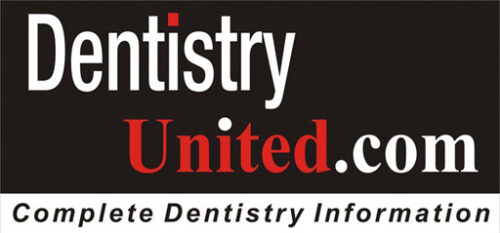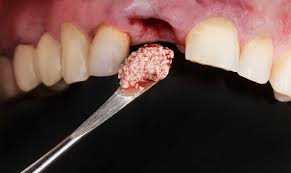Dental implantology has seen a dramatic evolution over the last few decades, with bone grafting playing an integral role in its success. The foundation of successful dental implants is the quality and quantity of the alveolar bone, which is essential for osseointegration. Thanks to innovative bone regeneration techniques and advanced grafting materials, patients with severe bone deficiencies are now viable candidates for implant placement. This article delves into the progression of bone grafting, its various methods, and the cutting-edge technologies transforming implant dentistry.
Why Bone Grafting is Essential in Implantology?
Bone loss in the jaw can occur due to several factors, including periodontal disease, trauma, tooth extraction, congenital defects, or prolonged edentulism. Without adequate bone volume, implant placement becomes difficult or even impossible. Bone grafting addresses this deficiency by augmenting or regenerating bone to create a stable base for implants, significantly enhancing long-term success rates.
Types of Bone Grafts
Bone grafting materials are categorized into four primary types:
-
Autografts (Autogenous Grafts):
- Harvested from the patient’s own body, typically from the mandibular ramus, chin, or iliac crest.
- Gold standard due to excellent osteogenic, osteoinductive, and osteoconductive properties.
- Drawback: Requires an additional surgical site, which can increase patient morbidity.
-
Allografts:
- Sourced from human cadaveric bone, processed to eliminate immunogenic properties.
- Available in demineralized freeze-dried bone allografts (DFDBA) and mineralized freeze-dried bone allografts (FDBA).
- Primarily osteoconductive, with some osteoinductive properties.
-
Xenografts:
- Derived from non-human sources (typically bovine or porcine bone) and processed to remove organic components.
- Acts as a scaffold, promoting new bone formation via osteoconduction.
- Slow resorption rate ensures prolonged structural support.
-
Alloplasts:
- Synthetic bone substitutes made from materials like hydroxyapatite (HA), tricalcium phosphate (TCP), and bioactive glass.
- Highly biocompatible and osteoconductive, with some materials offering osteoinductive properties.
Bone Regeneration Techniques
-
Guided Bone Regeneration (GBR):
- Uses resorbable or non-resorbable membranes to protect the graft site, preventing soft tissue growth and allowing osteogenic cells to repopulate the defect.
-
Ridge Augmentation:
- Rebuilds deficient alveolar ridges before implant placement, utilizing block grafts, particulate grafts, or a combination of both.
-
Sinus Lift Procedure:
- For patients with insufficient vertical bone in the posterior maxilla, sinus augmentation elevates the Schneiderian membrane and grafts bone, making implant placement possible.
-
Distraction Osteogenesis:
- Gradually expands existing bone to create new bone volume, particularly useful in cases of severe atrophy.
-
Platelet-Rich Fibrin (PRF) and Growth Factors:
- The use of PRF, platelet-rich plasma (PRP), bone morphogenetic proteins (BMPs), and other biologics accelerates bone regeneration and enhances graft integration.
Cutting-Edge Advancements in Bone Grafting Technology
-
3D Printing and CAD/CAM Technology:
- Custom-designed bone scaffolds using 3D printing and CAD/CAM technology allow for precision grafting, optimizing integration, and reducing surgical time.
-
Piezoelectric Surgery:
- Minimizes trauma to surrounding tissues, enhancing precision in bone grafting and implant preparation.
-
Stem Cell Therapy:
- Mesenchymal stem cells (MSCs) in bone regeneration show promising potential for autogenous tissue engineering, offering exciting prospects for future treatments.
-
Nanotechnology in Bone Grafting Materials:
- Nano-sized hydroxyapatite and bioactive molecules are incorporated into graft materials to improve their bioactivity and mechanical properties, fostering quicker new bone formation.
Conclusion
Bone grafting has revolutionized dental implantology, enabling the restoration of both function and aesthetics, even in cases of severe bone loss. As advancements in biomaterials, regenerative techniques, and digital technologies continue to evolve, implant dentistry is pushing the boundaries of what is possible. The future of bone regeneration promises even more personalized and biologically driven approaches, leading to improved success rates and better patient outcomes.
For dental professionals, staying abreast of these innovations is essential to offering optimal solutions for patients in need of implant therapy. The integration of bone grafting into daily practice not only broadens the scope of implant dentistry but also strengthens its role as a reliable and effective method for tooth replacement.
About Dr. Hajeera Banu
Dr. Hajeera Banu is a skilled dental professional with a deep passion for implantology, restorative dentistry, and aligners. A graduate of RGUHS in 2014, she has been practicing dentistry for several years and has developed a special interest in providing advanced dental solutions, particularly dental implants. Based in Mysore, India, Dr. Banu runs a private practice where she combines her clinical expertise with a patient-centered approach. Outside of her practice, Dr. Banu enjoys blogging, cooking, and traveling, continuously seeking to expand her knowledge and skills in the ever-evolving field of dentistry.

